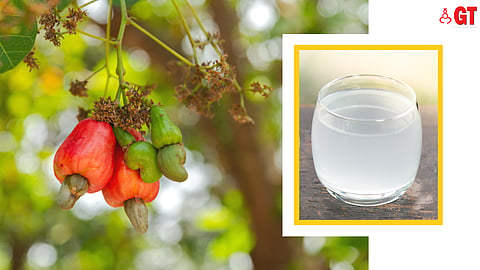

The month of March is all about bounty — right from raw mangoes to wild berries to love apples and, obviously, the cashew. This fruit, which was introduced to Goa around 500 years ago, is now part and parcel of its identity.
The cashew has lots of uses, right from consuming the nut after roasting or its juice which is used to make alcoholic drinks — urrak and feni.
However, there’s another drink made from this juice, which is non-alcoholic, has a limited shelf life and tastes like summer. It is neero.
TRADITIONAL TECHNIQUE
Extracting this juice is a long and tedious process, which you may come across in cashew farms across Goa. Neero, one can say, is the last extract of the cashew fruit juice.
The process (which is also the same for making urrak or feni) starts by harvesting the cashew fruit. Mind you, for this, the fruit is not plucked. Instead, only the fallen fruits are collected since fruits should be completely ripe and thus, very juicy and tasty.
After harvesting, comes the process of separating the cashew apple from the cashew nut/seed. This is the most time consuming process as one has to do so with their hands, that too, one by one.
Then comes the most interesting part of stomping the fruit. Traditionally, it is stomped with one’s feet. During this process, the juice that oozes out is collected to make urrak or feni, and not neero.
The neero is extracted from the smashed cashew apples, which are piled on top of each other, forming mounds which are held together using a wild creeper.
Heavy laterite rocks are placed on top of these mounds, thus squeezing out the juice from the fruit; this juice is what is locally called neero. Sometimes, a person stands on the piled rocks so as to squeeze out as much neero as possible.
It is quite a clear juice compared to the juice collected for urrak or feni.
Neero has to be consumed within a day as it starts fermenting after that and does not taste the same as when freshly extracted.
NOT SO SWEET REALITY
This is the traditional way of making neero, which is not so common nowadays. In the past, it was a family activity and those who owned the cashew orchard would come together and indulge in this process of making feni or just extracting juice for neero.
These days, as our hills are diminishing, and cashew trees are being replaced by row houses and bungalows, Goa is losing this tradition, which in many ways is the identity of Goa’s landscape.
Arti Das is a freelance journalist based in Goa. She loves writing about art, culture and the ecology of Goa.